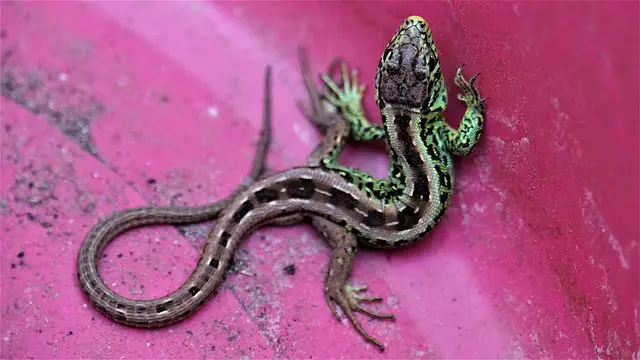If you own a lizard, the chances are that, at some point, your reptile companion will lose their tail. This is known as autotomy and is a defense mechanism used by lizards to escape from predators. But what happens when lizards lose their tails? Does it hurt them? Is there anything owners should be aware of? Here’s what you need to know about autotomy and how it affects lizards.
Does it hurt when lizards lose their tails?
When lizards lose their tails, it is a survival mechanism called autotomy or ‘tail dropping.’ This is a defense tactic used when a predator is attacking the lizard.
Body parts such as the tail that can be easily detached are ‘sacrificed’ to escape capture while the lizard runs away successfully.
Although this process doesn’t physically hurt the lizard, it carries physiological and psychological costs. As the lizard’s body parts grow back slowly, its mobility and energy are reduced, affecting its ability to forage for food, hide from predators and survive.
Furthermore, the loss of its tail changes its overall appearance, which adds a layer of stress if it takes a long time for the new tail to regrow and complete its camouflage again.
The Autotomy Process
Autotomy is a natural process for lizards where they can shed or release their tail if they feel threatened.
It’s an instinctual behavior that helps them escape predators and carries certain risks for the lizard.
Before losing their tails, the lizard’s body releases chemicals that cause the muscles to relax and contract around the tail’s base, allowing them to detach it quickly with minimal discomfort.
Once detached, the tail continues to move to confuse predators and give the lizard time to get away.
Does Autotomy Hurt Lizards?
Losing a tail does not hurt lizards because they have no pain receptors in their tails—just like humans don’t feel pain in their fingernails after clipping them.
However, some risks can be associated with autotomy, depending on how much of its tail a lizard loses.
For example, if too much of its tail is lost, then it may not be able to grow back correctly or entirely, which could result in physical deformities for the lizard over time.
Additionally, losing its tail can disrupt a lizard’s balance and affect its ability to swim or climb correctly.
Furthermore, since lizards rely on their tails for fat storage and movement, losing too much can leave them vulnerable to predators or other dangers in their environment.
What Should Owners Do If Their Lizard Sheds Its Tail?
If your pet lizard has recently shed its tail, then there are a few things you should do right away:
- Make sure your pet has enough food available to recover quickly;
- Check the wound area regularly for signs of infection, and reduce stress levels by avoiding handling until fully recovered (which could take several weeks).
- Additionally, suppose your pet loses most of its tail. Then, it would be best if you spoke with your vet about providing additional supplements such as calcium powder or vitamin D3 & A2 oil.
These can help promote new growth and healthy regeneration of the lost tissue.
Conclusion
Autotomy is an instinctive behavior used by lizards to defend against predators, but it also carries certain risks for our pet reptiles.
While shedding its tail doesn’t hurt them directly due to the lack of pain receptors in this area of their bodies—it can still leave them vulnerable if too much tissue is lost during the shedding process due to lack of balance & fat storage capabilities this part provides.
As such, owners need to ensure they provide sufficient nutrition & reduce stress while allowing ample time for recovery before handling again – plus supplementing the diet with calcium powder/vitamins D3 & A2 oil when needed – so that new growth is promoted & healthy regeneration takes place.
All these steps will ensure your pet remains safe & sound after losing its prized possession – its prehensile appendage.




